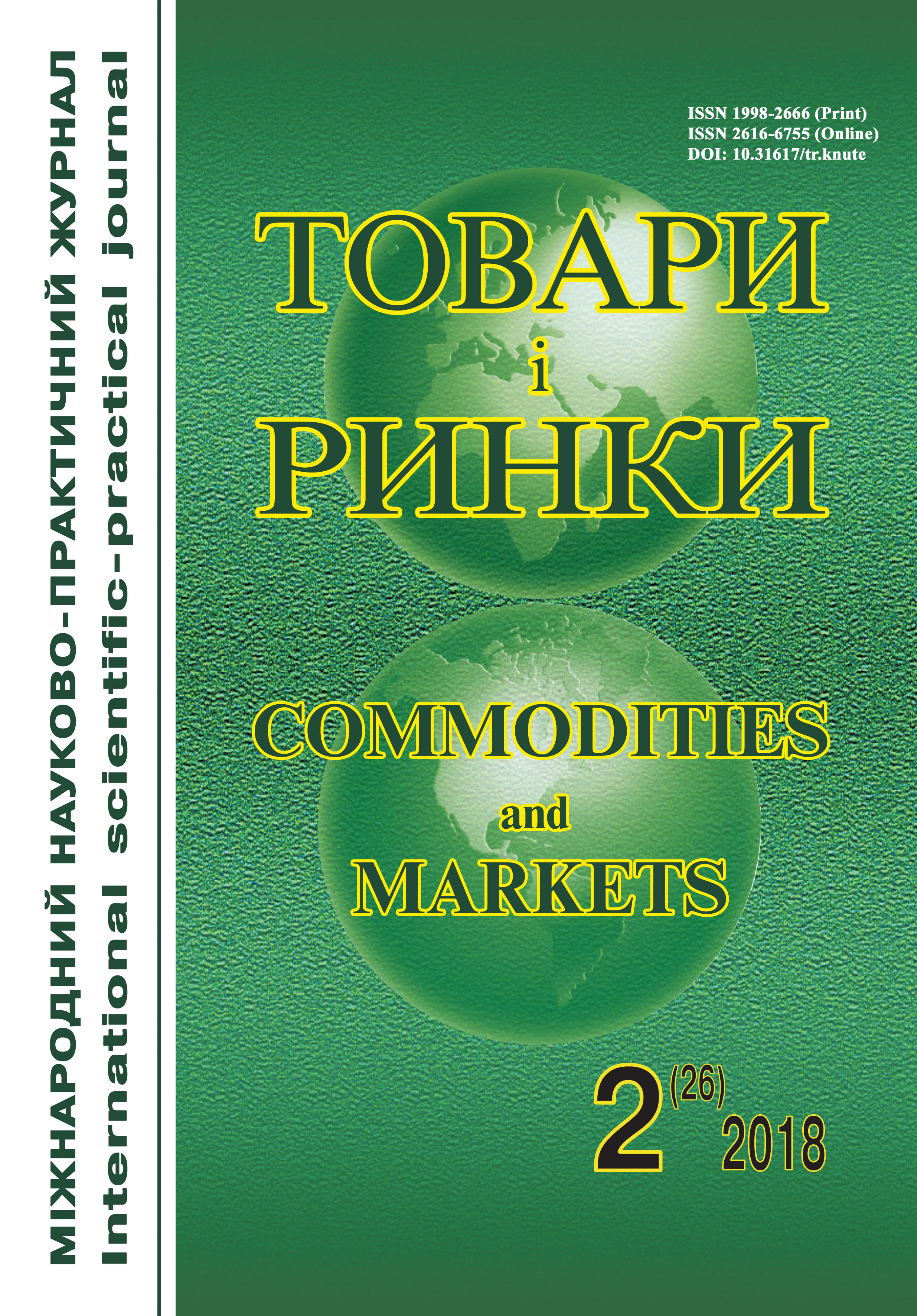Quality prediction of frozen broccoli
Keywords:
prediction, predictive model, predictigeneralized indicator, desirability function, frozen broccoliAbstract
Background. Automation of technological processes and the likelihood of significant material costs when making technically or economically unreasonable decisions necessitates the expansion of the scope of forecasting techniques in the food industry.
Scientists have developed different mathematical models for the optimization of modes and parameters of various processes and to predict the quality of the investigated products at all stages of its life cycle.
Theaimofthisstudyis to develop a predictive model of quality of frozen broccoli.
Material and methods. The object of research was frozen broccoli varieties Parthenon (Control) and pretreated (Experiment). Preliminary processing was carried out by soaking in 3 % sodium chloride solution for 20 minutes.
The construction of the predictive model and the calculation of the Fisher's statistical criterion were carried out in the Excel environment.
The properties conservation of broccoli during freezing and low-temperature storage were determined by the generalized Harrington desirability function. The consumer properties of broccoli cabbage are determined in the mean sample for organoleptic (appearance, taste, smell, color) and physico-chemical (content of soluble solids (PCR), ascorbic acid (AA), isothiocyanates, a- and b-chlorophyll and mass loss) indicators during freezing and during low temperature storage for 1, 3, 9 months in 2015–2017.
To construct a desirability scale (Fig. 2), ready-made spreadsheets of correspondence between preferences and their numerical characteristics were used. The generalized function of desirability was given as the average compuond of individual desires [10].
Results. The development of the quality model was preceded by the identification of specific indicators (factors). The following indicators have the highest correlation: storage time (r = –0.84), mass fraction of ascorbic acid (r = 0.91) and quantitative content of isothiocyanat (r = 0.93), total content of a - and b-chlorophyll (r = 0.91). Therefore, we chose them to build a predictive model. Linear model with a coefficient of determination R = 0.994 turned out to be the best to predict changes in the quality of the research samples. The regression equation used for forecasting is:
y = 417.9 – 1.14x1 + 29.73x2 + 0.73x3 + 12.24x4,
where y –quality of frozen broccoli;
x1– storage life, months;
x2– mass fraction of ascorbic acid, mg/100 g;
x3– quantitative content of isothiocyanate, %;
x4– total content of a- and b-chlorophyll, mg/100 g.
In order to evaluate the adequacy of the obtained model, Fisher's statistical criterion was used, the estimated value of which is Fcalc = 58.934, Ftabl = 5.591.
Since Fcalc > Ftabl, the resulting linear model is adequate and can be effectively used to predict the quality of the frozen broccoli.
Conclusion. It is established that the determining factors of influence on the quality of frozen broccoli during long low-temperature storage are the storage period, mass fraction of ascorbic acid, quantitative content of isothiocyanate, total content of a- and b-chlorophyll.
References
Monzini A., Maltini E. Aspetti tecnici della congelazione e qualita dei prodotti. Industrie alimentari. 1984. Vol. 34. Р. 749–770.
Shapoval M. I. Menedzhment jakosti. Kyi'v : Znannja, 2007. 471 s.
Blagun I. S., Burtnjak I. V., Malyc'ka G. P. Prognozuvannja ekonomichnyh i social'nyh procesiv : navch. posib. Ivano-Frankivs'k : Plaj, 2012. 156 s.
Chernyshova O. V., Cibizova M. E. Innovacionnyj podhod k polucheniju jekstraktov prjano-aromaticheskih rastenij. Nauka, obrazovanie, innovacii: put' razvitija : materialy IV Vseros. nauch.-prakt. konf. Petro-pavlovsk-Kamchat : KamchatGTU, 2013. S. 161–163.
Ibragim K. D. Razrabotka tehnologii kompleksnoj pererabotki plodov i list'ev olivkovogo dereva dlja sozdanija novyh produktov gerodieticheskogo pitanija : avtoref. diss. … kand. tehn. nauk. Krasnodar, 2005. 23 s.
Aamir M., Mahmoudreza O., Shyam S., Rasco B. Predicting the Quality of Pasteurized Vegetables Using Kinetic Models. Hindawi Publishing Corporation. 2013. Vol. 12. P. 1–30.
Mitrevski V., Mitrevska C., Geramitcioski T., Mijakovski V. Drying kinetics and mathematical modeling of far-infra red vacuum drying of some vegetables and fruits. Applied Engineering Letters. 2017. N 3. P. 109–114.
Ling B., Tang J., Kong F. Kinetics of Food Quality Changes During Thermal Processing. Food and Bioprocess Technology. 2015. N 2. P. 333–358.
Giannakourou M., Taoukis P. Kinetic modeling of vitamin C loss in frozen vegetables under variable storage conditions. Food Chemistry. 2003. N 83. P. 33–41.
Koltunov V. A., Puzik L. M., Ermantraunt E. R., Platohin V. Ja. ta in. Naukovi doslidzhennja u tovaroznavstvi sil's'kogospodars'kyh produktiv : monografija ; za zag. red. d-ra s.-g. nauk, prof. V. A. Koltunova. Harkiv : Vyd-vo Ivanchenka I. S., 2016. 236 s.



